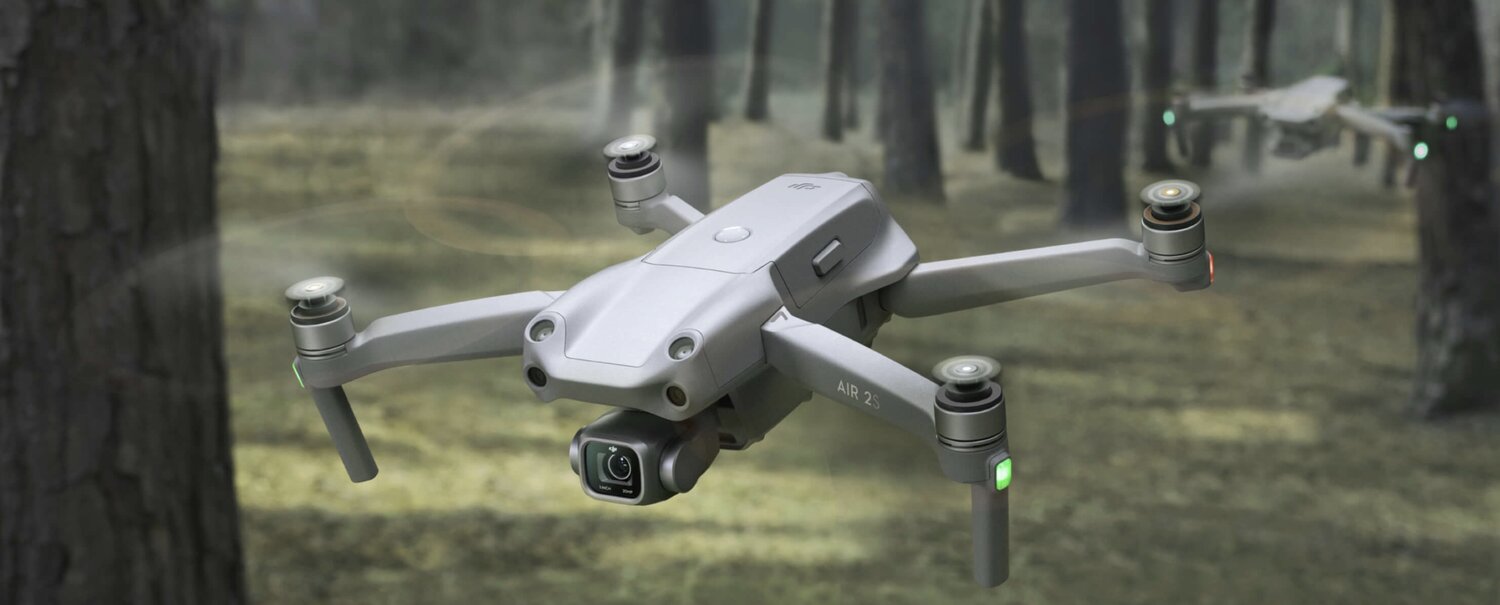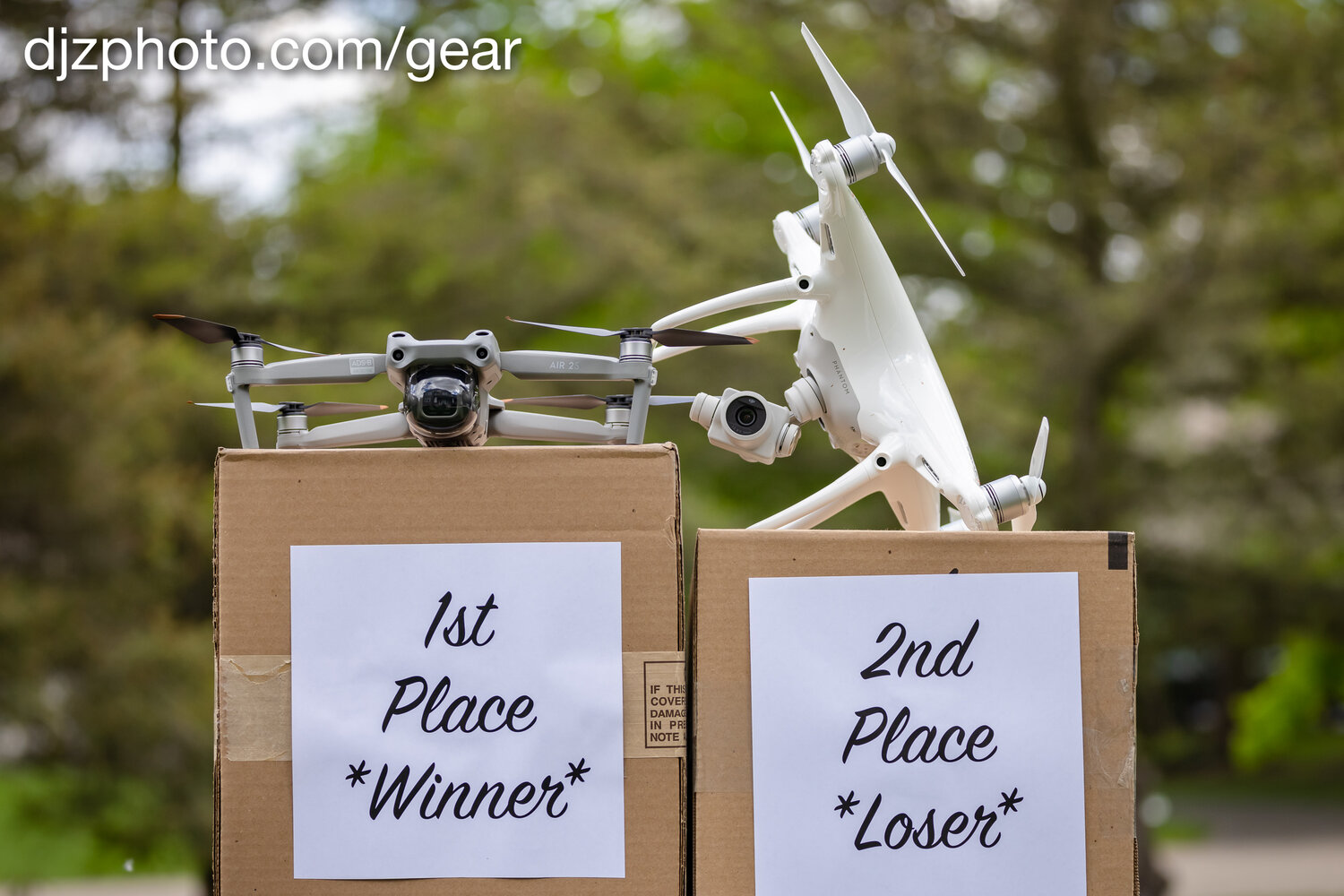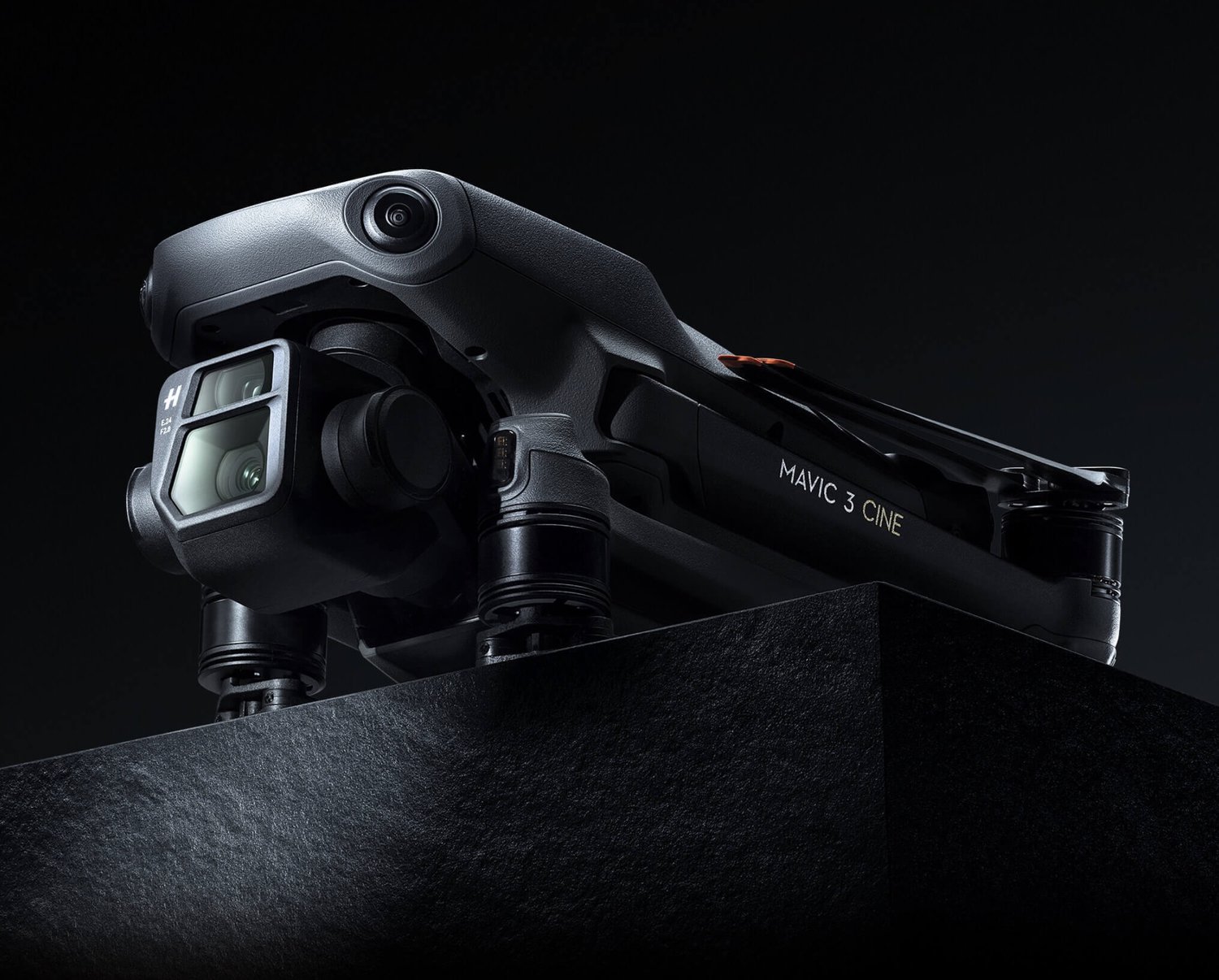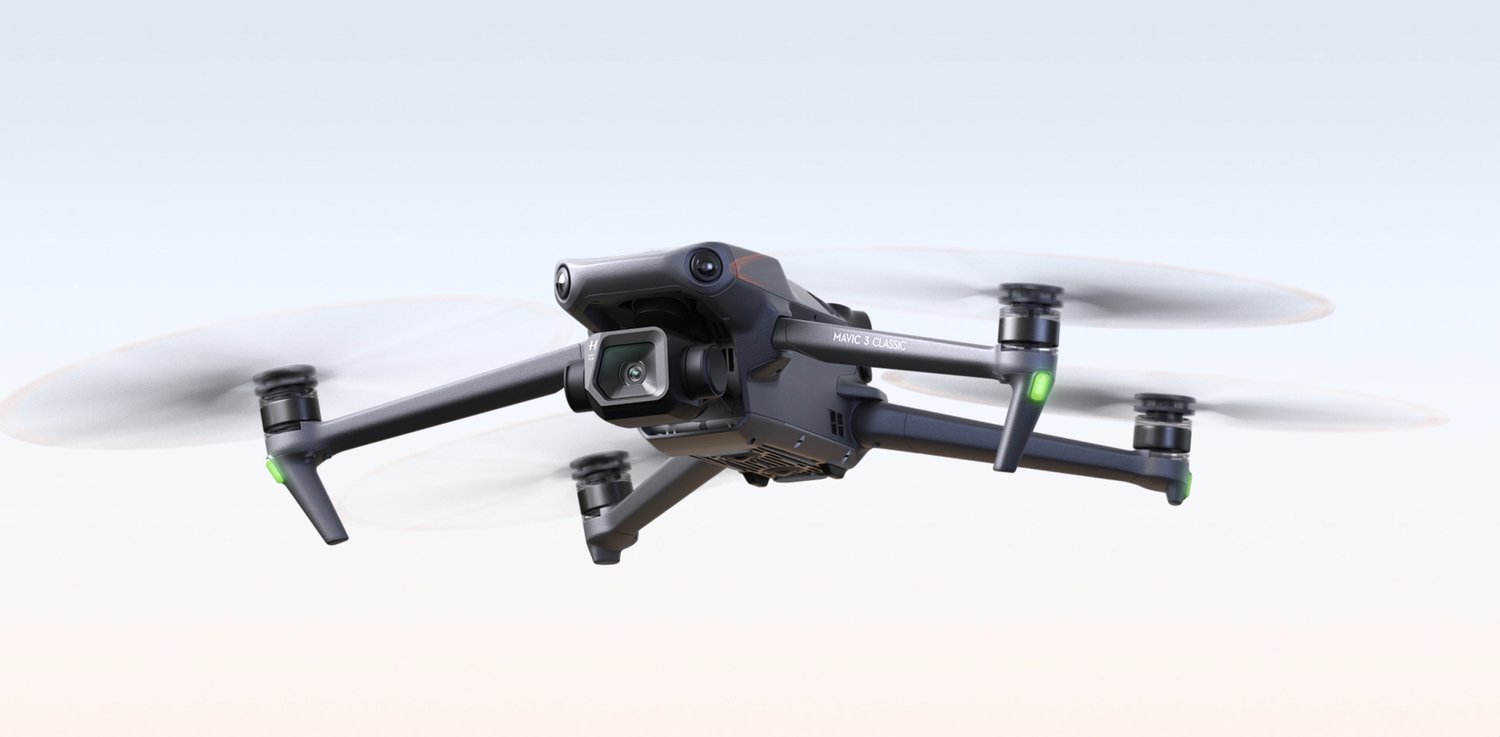See Also: Is the DJI Air 2S Fly More Combo a Good Value vs. the Basic Package? See Also: DJI Air 2S Review: Has DJI Finally Created a Superior Successor to the Phantom 4 Pro?? See Also: Pelican 1400 Protector Case - A Customizable Waterproof Case for DJI Mavic Series Drones
This page contains links to products, so if you find this site useful and use a link to make a purchase, I’ll get a small commission. As an Amazon Associate I earn from qualifying purchases. Enjoy!

DJI has announced the new DJI Air 2S with a 1” Sensor, Capable of shooting 20MP photos and 5.4K video.
DJI today has officially announced the DJI Air 2S, an updated version of the Mavic Air 2. It is the same compact size as the Mavic Air 2, and is only slightly heavier (595g vs 570g).
I am thrilled to see they upgraded the camera sensor size to 1-inch like the Phantom 4 Pro and the Mavic 2 Pro. It actually shoots higher resolution video than any of their other sub-$2,000 drones, using every (horizontal) pixel of the sensor to shoot 5.4K video! Barring the much larger, heavier, more expensive professional/enterprise drones like the Inspire 2 and Matrice series, this drone looks to be their new flagship (for now). Given this development, I’ll be interested to see where they end up going with the Mavic series. Will there be a Mavic 3? Time will tell.
In perusing through the specs page for the DJI Air 2S I noticed they’ve changed the camera lens to a 22mm (full-frame equivalent) with an 88-degree field of view, compared with 24mm/84-degree lens on the Mavic Air 2 & Phantom 4 Pro. The Mavic 2 Pro camera lens is 28mm with a 77-degree field of view.
I am looking forward to comparing the camera on this new drone to my trusty old Phantom 4 Pro, which previously beat the Mavic Air 2 in my image quality battle.
DJI Air 2S on Amazon
DJI Air 2S Fly More Combo on Amazon
From the DJI Press Release: “DJI Air 2S Melds Incredible Image Quality With Unmatched Flight Performance
Added Obstacle Sensors Improve Autonomous Flying, While The 1” Sensor Offers 20-Megapixel Photos and 5.4K Video
DJI, the global leader in civilian drones and creative camera technology, today sets a new benchmark for high-grade flight performance and incredible imagery with the new DJI Air 2S. This portable camera drone is an all-in-one solution, offering robust flight performance, state-of-the-art camera upgrades and high-grade preprogrammed content creation tools.
“Every creator remembers what it felt like to fly a drone for the first time, and they’ll feel the same sense of wonder and possibility when they first experience DJI Air 2S’s unparalleled mix of astonishing flight capability and gripping image quality,” said Ferdinand Wolf, Creative Director, DJI Europe. “DJI Air 2S is a wish list come to life for everyone who demands more from a drone, showcasing upgrades that truly elevate the system into a highly versatile drone. From content creators, to drone enthusiasts and travelers, we are confident that a lot of people will be excited about this drone.”
The DJI Air 2S is the first drone of its size to capture 20-megapixel still images or video in 5.4K with a new one-inch sensor that was previously available only on larger, less agile drones. DJI continues to enable the effortless creation of imaginative content with the new MasterShots feature. This advanced feature uses automatic flight path planning to set the drone’s course while recording video. Upon completion of the flight, DJI Air 2S automatically merges the footage under one theme to create an eye-catching video.
DJI Air 2S’s 31 minutes of maximum flight time and four-way directional obstacle sensors let the pilot focus on the shot while the drone’s safety systems warn when obstacles are getting close. APAS 4.0 is the most advanced autopilot system on any DJI drone and when turned on, seamlessly maneuvers around objects autonomously. O3, DJI’s third iteration of OcuSync, brings the most reliable transmission technology in the drone market to this portable, foldable drone so users know their connection is stable. The upgraded FocusTrack mode includes a suite of programmed modes like Spotlight 2.0, ActiveTrack 4.0 and Point of Interest 3.0 that easily mimic the focus, control and movement of a professional video operator.
An All-In-One Tool for All Your Content Capturing Needs
Expand your creative vision and capture high-grade footage using a new one-inch sensor capable of recording 20-megapixel still images, 5.4K video at 30fps or 4K at 60fps and 150Mbps. The one-inch sensor is larger than the sensor on the original Mavic Air 2 and offers a larger pixel size of 2.4μm, capturing more information and detail for better photos and videos. Get closer to the subject without moving the drone using a new digital zoom that supports 4X zoom at 4K 30fps, 6X at 2.7K 30fps, 4X at 2.7K 60fps, 6X at 1080P 60fps and 8X at 1080P 30fps. DJI’s renowned three-axis mechanical gimbal smooths out footage for professional-level quality and 8 GB of internal storage have been added. Users can choose to record in H264 or H265, depending on their preferences for image detail and storage capacity and can also choose from three video color profiles, Normal (8 bit), D-Log (10 bit) or HLG (10 bit) to match their video needs.
In addition to standard photo options like Timed Photo, AEB and Panoramas, DJI Air 2S’s SmartPhoto mode records 20-megapixel photos using advanced scene analysis and deep learning to automatically choose the best of three options that will create the most visually appealing image for you, including HDR, Hyperlight and Scene Recognition. HDR modes merge several images together for a vibrant scene while Hyperlight is designed for low-light scenarios and Scene Recognition can identify several common settings and apply camera adjustments to capture photos that pop.
Pre-Programmed Modes for Pro-Level Footage
The DJI Air 2S has the most programmed flight modes and image capture modes of any DJI drone of its size. These creative options include:
-
MasterShots: Professional-level aerial footage has never been easier. After activating MasterShots, the drone will autonomously plan a flight path, choose from three different image capture modes, including Proximity, Portrait or Landscape, and start recording classic aerial footage. Pilots can choose different themes and the DJI Fly app will generate a unique video that’s ready to be shared with the world.
-
FocusTrack: Focus on the scene and let DJI Air 2S do the hard work for you. Select your subject by drawing a square around it on your mobile device, then choose from Point of Interest 3.0, an autonomous flight path around the subject; ActiveTrack 4.0, a tool that seamlessly tracks the subject and keeps it in the frame; or Spotlight 2.0, where the drone movement is controlled by the pilot while it locks the subject into the frame.
-
QuickShots: A staple DJI feature, QuickShot modes include Rocket, Circle, Dronie, Helix, Boomerang and Asteroid.
-
Hyperlapse: See the world sped up from the air and in motion with the Hyperlapse option in resolution up to 4K. Content captured in 4K resolution and lower can apply digital stabilization for an added layer of smoothness.
Safe and Intuitive Flight Operation in an Ultra-Portable Drone
DJI Air 2S uses four high-grade antennas and the latest version of DJI’s proprietary OcuSync transmission tech, O3, to deliver a stable feed at a maximum distance of 12km, even in areas with a high number of signals. A maximum 31 minutes in the air gives pilots more time to capture visually appealing footage while four-way sensors help reduce the risk of collision. The newly upgraded front, rear, bottom and top obstacle sensors incorporate binocular zooming technology to recognize incoming objects from further away at faster speeds.
DJI Air 2S uses the latest and most advanced version of Advanced Pilot Assistance System (APAS) 4.0, which allows the drone to autonomously and seamlessly maneuver around, under and over obstacles. While flying at normal speeds, the newly improved APAS 4.0 offers a wider field-of-view to detect obstacles compared to previous versions. If pilots are flying at higher speeds, as the angle of the drone pitches forward more and the newly added upward obstacle sensor plays a critical part in assisting obstacle detection. As with DJI’s latest drone models, the DJI Air 2S’s AirSense system warns drone pilots of nearby airplanes and helicopters transmitting ADS-B signals, so the drone can be quickly moved to a safer location. Other standard DJI safety features of DJI Air 2S include an improved Return-To-Home (RTH) feature, which can bring a drone back to its launch point if it loses contact with the controller or reaches a critically low battery level, and the GEO 2.0 geofencing system to advise pilots of sensitive locations and help them automatically keep away from high-risk areas such as airports. DJI Air 2S uses the latest version of the DJI Fly app, which features a wealth of educational information and tutorials to get new pilots up in the air quickly.
DJI Care Refresh
DJI Care Refresh is now available for DJI Air 2S, covering various accidents, such as water damage, collisions, flyaway, etc. For an additional charge, DJI Care Refresh offers up to two replacement units within one year, including coverage for one flyaway incident. The two-year plan provides three replacement units in two years, including coverage for up to two flyaway incidents and an extension of the original warranty period by one year (extension durations vary by region). Receive your replacement even sooner with DJI Care Refresh Express. DJI Care Refresh also includes exclusive after-sales support and free two-way shipping.
Price and Availability
DJI Air 2S is available for purchase today from store.dji.com and from authorized retail partners in several configurations. The standard combo retails for $999 and includes the drone, remote controller, one battery and all the cables and parts needed to get into the air. The Fly More Combo retails for $1,299 includes everything from the standard combo with the addition of 2 batteries for a total of 3, ND filters, a charging hub and a shoulder bag.”













